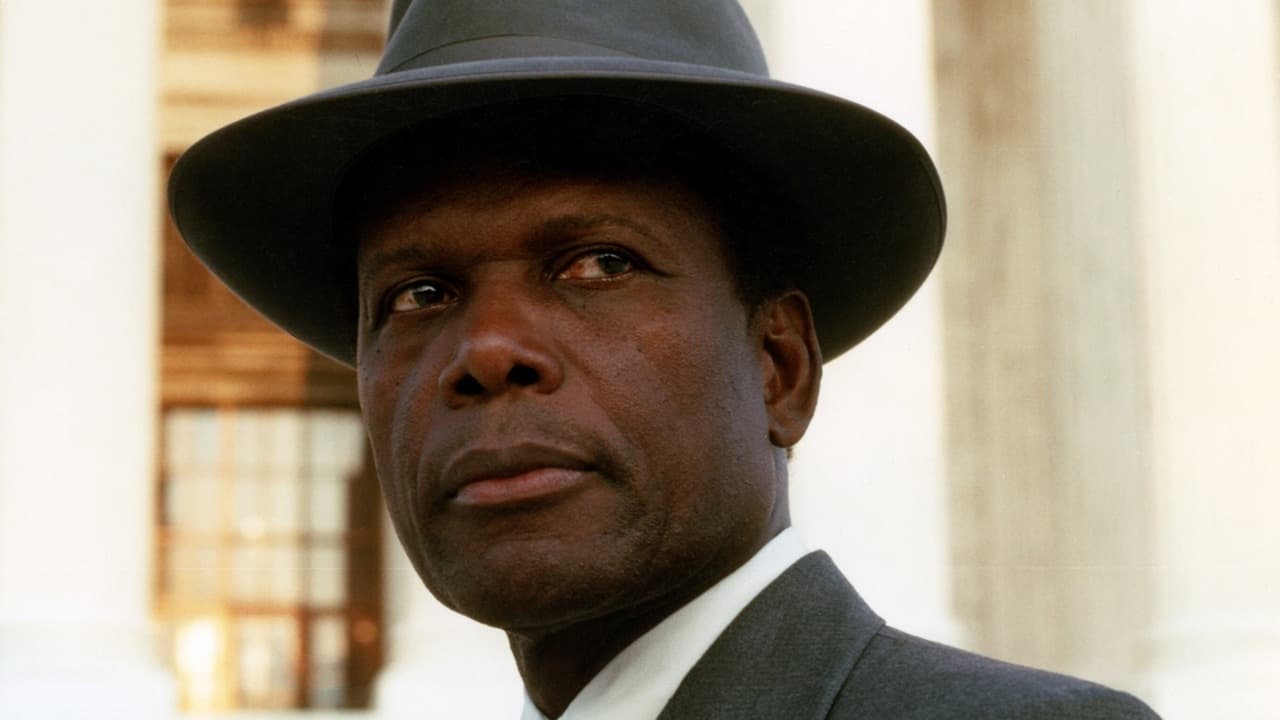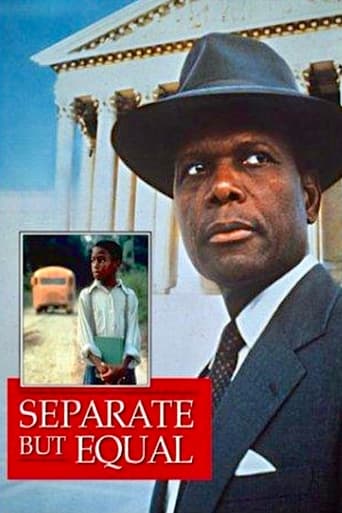SparkMore
n my opinion it was a great movie with some interesting elements, even though having some plot holes and the ending probably was just too messy and crammed together, but still fun to watch and not your casual movie that is similar to all other ones.
CrawlerChunky
In truth, there is barely enough story here to make a film.
SeeQuant
Blending excellent reporting and strong storytelling, this is a disturbing film truly stranger than fiction
Jenna Walter
The film may be flawed, but its message is not.
HotToastyRag
When making a film about the historic Brown vs. Board of Education case, who would be the obvious choice to play civil rights icon Thurgood Marshall? If you answered Sidney Poitier, you agreed with the casting director of Separate But Equal. The movie chronicles the journey in the 1950s for racial equality and desegregation in the school system.In his final film, Burt Lancaster plays John W. Davis. Richard Kiley plays Chief Justice Earl Warren, and he—and Sidney—were nominated for Golden Globes that year. Joining the supporting cast are Cleavon Little, Gloria Foster, John McMartin, Graham Beckel, and Lynne Thigpen. George Stevens Jr.'s script is something to be admired, since he tried very hard to make it historically accurate and interesting to television audiences. It's not the best American history movie ever made, and it's certainly not a good choice if you've never seen a Sidney Poitier or Burt Lancaster movie, but if you know your history and want to watch a three-hour tribute to this slice of Americana, go ahead and rent it. It does feel pretty cheesy at times, and Sidney Poitier tends to overact more often than not in his scenes, but overall, it's a great movie for high school students to watch as an addendum to their curriculum.
asad_raza
`John, if this case goes before the Supreme Court. . . I'm gonna need you'It's the early 1950's, in America. The governor of South Carolina (James Francis Byrnes), in his 70's at the time, pays a visit to his friend, the famous John W. Davis. Davis had argued 138 cases in front of the Supreme Court. Byrnes was turning to him for help.Byrnes was determined to show that discrimination and segregation of public schools were not the same thing. He wanted black school children to have equal schools. He was ashamed of the terrible condition the black schools were in, in his state of South Carolina. He even levied a three percent sales tax to fund the improvement of black schools. He was prepared to spend 75 million dollars to improve the public schools for black children in his state.But he knew, that the small case that a few courageous people (Harry Briggs, Reverand J.A. Delaine) had started in Clarendon county, SC, was too big of an issue for his efforts alone. The case was on it's way to the Supreme Court of the United States of America. The National Association for the Advancement of Colored People (the NAACP), had become involved. Their head lawyer, Thurgood Marshall had combined this case and 4 other similar cases (from Delaware, Kansas, DC and Virginia) into one called 'Brown v. Board of Education', and made it his mission to strike down segregation in public schools in America.The great thing about this movie is how it makes each side look respectable. The movie does not make this a 'bad evil white men against poor suffering black people' type of story. But rather, the film, portrays the white men as being highly respected, educated and willing to do the right thing. But at the same time, very concerned and perhaps even afraid of the consequences of their decisions.I also loved the humor in this film. For example when Byrnes is conversing with Davis and says 'I admit to past sins, our colored schools are a disgrace'. Or when one of the lawyers at the NAACP legal defense fund says about the South Carolina case "If we win this one, we'll only have 11,172 school districts left"The heart of this film is the uncommon courage of the people. Courage among so many involved. Of course, first from the blacks from those small towns, who risked their jobs and safety, and faced the hate of the Ku Klux Klan, by taking these complaints to their local lawyers. Then, to the NAACP, for climbing this long and expensive uphill battle. But also, to the judges on the Supreme Court, and in particular the Chief Judge Earl Warren.Warren was quoted as saying 'Everything that I did in life that was worthwhile, I caught hell for'. What a difficult decision, but what a remarkable effort on his part to unite the nine members of the Supreme Court to conclude the case with a unanimous decision to end segregation in public schools in America.It took a lot of brave people on both sides, to end separation of black and white school children in public schools. Perhaps Thurgood Marshall summed it up best, when he mocked the thinking of people in the south by saying 'you can have them attending the same State Universities and Graduate schools, but if they attend the same elementary and high schools together, the world would fall apart.'A wonderful treasured movie. Must see for all.
George Parker
Recently, four states celebrated the 50th anniversary of a 1954 American Supreme Court landmark decision which struck down the long standing "separate but equal" status for racially divided public schools in a finding against public school racial segregation. The case for desegregation was argued by Thurgood Marshall (Poitier) - founder of the NAACP's Legal Defense Fund who later became the first black Supreme Court justice - before nine Supreme Court justices presided over by Chief Justice Earl Warren (Kiley). Though the federal trial represented a collective consideration of trials in the four states (SC, KS, VA, and DW), this 3 hour, 2 part TV miniseries docudrama focuses on the South Carolina case (Briggs et al. v. Elliott et al.) in Part 1 and the Supreme Court trial in Part 2. "Separate but Equal" has little to offer save its historical significance as it dwells mostly on the legal dialectic at work during this benchmark in the genesis of racial equality in America. Good viewing for anyone with a general interest in the history of racial issues in America or a specific interest in the NAACP or the Supreme Court. (B)
Vegita
Separate but Equal is a great movie depicting the tragedy of the time of racial segregation in schools and the steps which these men from the NAACP took to correct it. The movie has great acting and intense speech emotion but sinks into the wordiness and vocabulary which lawyers and judges use and leaves the audience scratching their heads or reading the dictionary. Nevertheless, the movie has great speeches and facts as well as events suitable in a history-documentary. Great movie to sit by and try to teach yourself to be a lawyer.

